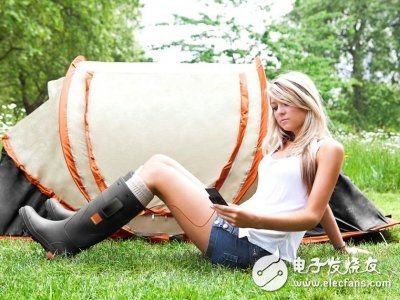If any device is more popular than a smart TV, it is undoubtedly a wearable device. With the involvement of companies such as Apple, Google, and Baidu, wearable devices are becoming a new hotspot in the home appliance digital industry. However, experts also said that wearable devices are not only expensive, but also not very practical. Whether they can get rid of the short-lived gimmick fate still needs time to test. Replace smart TV as a new hot spot Acer recently confirmed that the company will release wearable electronic products in 2014. Acer Liu Sitai, President of Acer's Smart Phone Business Unit, said: "We are paying attention to the wearable device field. I think every consumer product company should pay attention to wearable devices. This industry has not yet entered the outbreak period, but it has billions The value of the US dollar. " Wearable device technology is mainly to explore and create devices that can be worn directly on the body or integrated into the user's clothes or accessories. Before Acer, Google, Apple, Baidu, Sony and other companies have announced their entry into the market and launched related products. It is understood that there are already many wearable devices in circulation in the US market, such as watches and glasses. In China, Shanda Electronics, a subsidiary of Shanda, has just launched its first smart watch and smart ring. Smart devices are currently showing two trends of further enlarging the screen to occupy the living room and shrinking to be more personal. Industry expert Ji Yongqing believes that although both directions are continuing to move forward, the popularity of the latter will be much faster than the former. Because the extension of wearable devices is greater. Unless somatosensory technology develops by leaps and bounds, smart TVs are still just TVs, and it still changes people's viewing habits. In other words, smart TV only uses your eyes. What it can change is still the TV and entertainment industries that are being changed. Three-year shipments may reach 100 million units Consumer enthusiasm has made the industry optimistic about the future of wearable devices. According to a white paper on wearable technology released by IHS, the company expects that wearable devices will reach 39 million to 170 million shipments by 2016. Another research company also said that the market size of wearable devices will reach 800 million US dollars this year, and this data will increase to 1.5 billion US dollars next year. Wearable devices can be traced back to more than ten years ago, a company in the United States tried to bring wearable devices to the market, but has not been widely popularized. And with the IT giants such as Google and Apple competing to participate in the research and development of wearable device products, it will undoubtedly bring full benign competition and development momentum to the wearable device field. Apple CEO Cook once said that wearable smart devices are gradually maturing. Although they are still ahead, the development of the industry will gradually become clear and worth exploring. "Now the concept of 3D and wearables is sought after by capital abroad, but most domestic capitals are still quite cautious." Wu Ronghui, investment director of Intel Capital, told the Beijing Business Daily that although there are many opportunities in the wearables industry, it is still clearly still Niche and narrow niche areas; instead, giants in related fields have made some investments out of strategic layout and other considerations. Practicality is not enough to promote the short board To a certain extent, the wearable device frees the user's hands, and the setting of some functions does indeed make the user's life more convenient. However, the current wearable devices are still in a gimmick, whether in China or abroad, and are embarrassingly lacking in practicality. The reporter also found in the investigation that although many companies are doing their best to develop wearable device products, there is still a long way to go before they can become the mainstream of the market. Like the smart watch released by Shanda a few days ago, its main function is to realize some running computing, navigation, remote control and other services. In fact, these application services can be implemented on smart phones. In the opinion of industry experts, Shanda's smart watch is more like a reduced version of iPod touch, there is no innovation at all, and its price of up to 1999 yuan is also difficult to be accepted by consumers. Experts in the industry have said that in order to be recognized by consumers, they must first achieve innovation and improvement of product technology, and at the same time need to reduce product costs. You can't rely on some "little clever" style changes to achieve marketization of products. Liu Sitai believes that for wearable devices, Acer's current problem is not technical, but how to win the favor of consumers. He said: "You need to put a series of functions into the product, and these functions are exactly what people expect." LED street lamp refers to the street lamp made with LED light source, which has the unique advantages of high efficiency, safety, energy saving, environmental protection, long life, fast response speed, high color rendering index, and is of great significance to urban lighting energy saving. Led Road Light,Led Off Road Lights,Led Roadway Lighting,Cob Led Road Light Yangzhou Heli Photoelectric Co., Ltd. , https://www.heli-eee.com